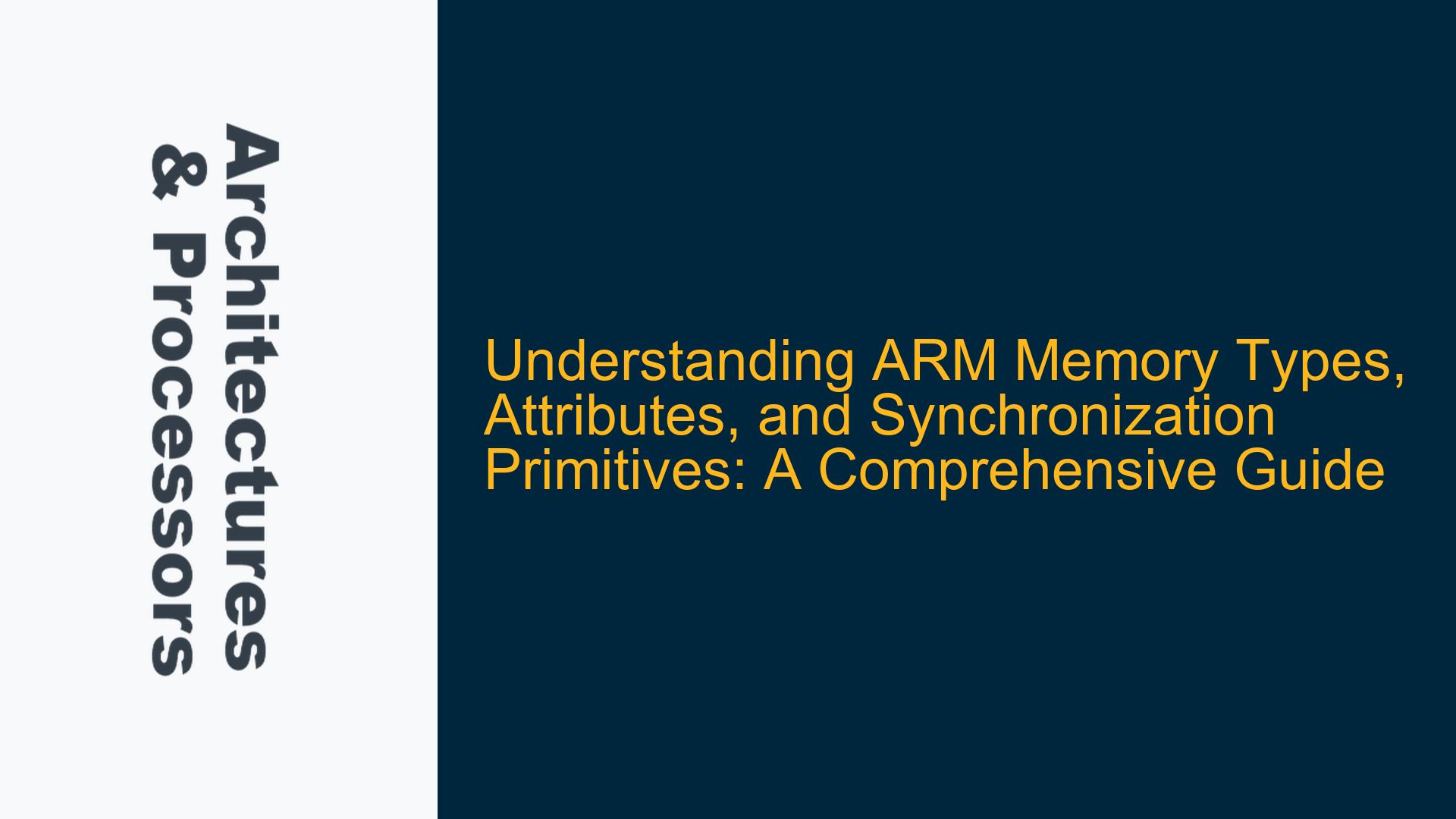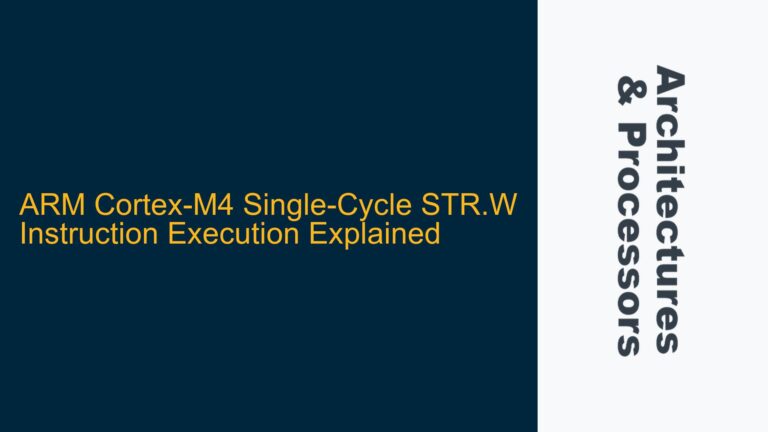ARM Memory System Fundamentals: Types, Attributes, and AMBA Protocol Integration
The ARM architecture provides a sophisticated memory system that is critical for efficient and reliable embedded system design. At the core of this system are three key concepts: memory types, memory attributes, and synchronization primitives such as monitors and semaphores. These concepts are deeply intertwined with the Advanced Microcontroller Bus Architecture (AMBA) protocol, which governs how processors and peripherals communicate within an ARM-based system.
Memory types in ARM architectures define the behavior of memory regions in terms of access permissions, caching, and buffering. The primary memory types include Normal, Device, and Strongly Ordered memory. Normal memory is used for general-purpose data storage and supports caching and speculative accesses. Device memory is used for peripheral registers and has specific access characteristics to ensure correct interaction with hardware. Strongly Ordered memory is a subset of Device memory that guarantees strict ordering of accesses, which is crucial for certain peripherals where the sequence of operations is critical.
Memory attributes further refine the behavior of memory regions by specifying properties such as cacheability, shareability, and access permissions. These attributes are essential for optimizing performance and ensuring correct operation in multi-core systems. For example, cacheable memory regions can significantly improve performance by reducing access latency, while non-cacheable regions are necessary for memory-mapped I/O where caching would lead to incorrect behavior.
The AMBA protocol plays a pivotal role in defining how these memory types and attributes are implemented and enforced. AMBA specifies the bus interfaces and communication protocols used by ARM processors and peripherals, ensuring that memory accesses are handled correctly according to their types and attributes. Understanding how AMBA integrates with the ARM memory system is crucial for designing efficient and reliable embedded systems.
Exclusive Monitors and Semaphores: Synchronization in Multi-Core ARM Systems
In multi-core ARM systems, synchronization between cores is a critical aspect of system design. Exclusive monitors and semaphores are two key mechanisms used to achieve this synchronization. Exclusive monitors are hardware constructs that enable atomic operations, such as load-linked/store-conditional (LL/SC), which are essential for implementing synchronization primitives like spinlocks and mutexes. These operations allow a core to perform a read-modify-write sequence atomically, ensuring that no other core can interfere with the operation.
Semaphores, on the other hand, are software constructs used to manage access to shared resources. They provide a way for multiple cores to coordinate their access to a resource, ensuring that only one core can access the resource at a time. Semaphores are typically implemented using atomic operations provided by the exclusive monitors, making them a fundamental part of multi-core synchronization.
The relationship between exclusive monitors and semaphores is crucial for understanding how synchronization is achieved in ARM systems. Exclusive monitors provide the hardware support needed for atomic operations, while semaphores use these operations to implement higher-level synchronization mechanisms. This interplay between hardware and software is essential for ensuring correct and efficient operation in multi-core systems.
Implementing and Troubleshooting ARM Memory and Synchronization Mechanisms
Implementing and troubleshooting ARM memory and synchronization mechanisms requires a deep understanding of the underlying hardware and software interactions. One common issue is the incorrect configuration of memory types and attributes, which can lead to performance bottlenecks or incorrect behavior. For example, configuring a memory region as cacheable when it should be non-cacheable can result in stale data being read from the cache, leading to incorrect operation of peripherals.
To troubleshoot such issues, it is essential to carefully review the memory map and ensure that each region is configured with the correct type and attributes. This involves understanding the specific requirements of each peripheral and ensuring that the memory attributes align with these requirements. Tools such as memory map viewers and debuggers can be invaluable for verifying the configuration and identifying any discrepancies.
Another common issue is the incorrect use of synchronization primitives, which can lead to race conditions and deadlocks. For example, failing to use the correct memory barriers or cache management operations can result in cores accessing stale or inconsistent data. To address this, it is crucial to understand the memory ordering guarantees provided by the ARM architecture and to use the appropriate synchronization primitives to ensure correct operation.
In multi-core systems, the use of exclusive monitors and semaphores must be carefully managed to avoid contention and ensure efficient operation. This involves understanding the specific implementation of these mechanisms in the target ARM core and ensuring that they are used correctly in the software. Debugging tools that provide visibility into the state of the exclusive monitors and semaphores can be invaluable for identifying and resolving synchronization issues.
In conclusion, understanding ARM memory types, attributes, and synchronization primitives is essential for designing efficient and reliable embedded systems. By carefully configuring memory regions and using the appropriate synchronization mechanisms, developers can ensure correct operation and optimize performance. Troubleshooting these mechanisms requires a deep understanding of the underlying hardware and software interactions, as well as the use of appropriate tools and techniques to identify and resolve issues.






